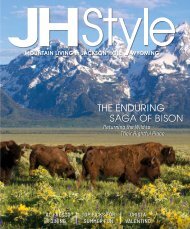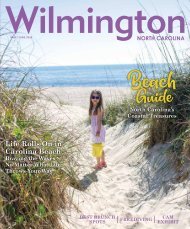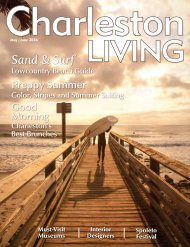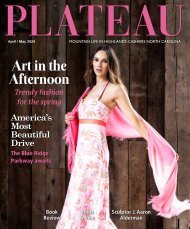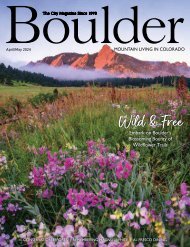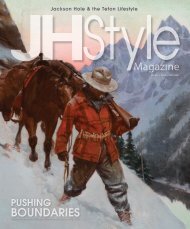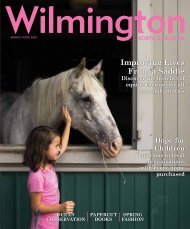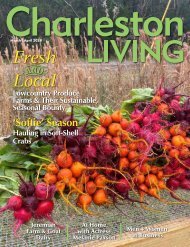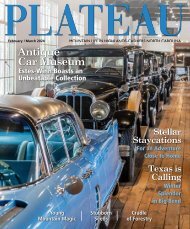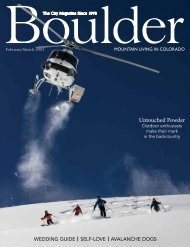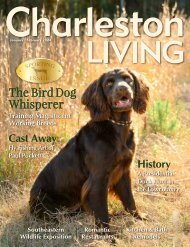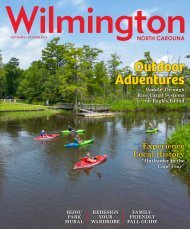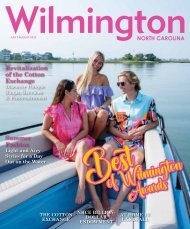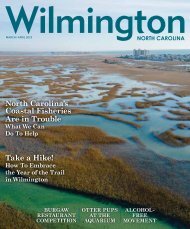Charleston Living Magazine Nov-Dec 2023
Charleston SC - The official city magazine for Charleston SC since 2012. Charleston Living Magazine is the authority on living the good life in Charleston, Mount Pleasant, Summerville, Isle of Palms, Sullivan's Island and Folly Beach, SC, showcasing homes and design, restaurants, art, fashion, business and more.
Charleston SC - The official city magazine for Charleston SC since 2012. Charleston Living Magazine is the authority on living the good life in Charleston, Mount Pleasant, Summerville, Isle of Palms, Sullivan's Island and Folly Beach, SC, showcasing homes and design, restaurants, art, fashion, business and more.
You also want an ePaper? Increase the reach of your titles
YUMPU automatically turns print PDFs into web optimized ePapers that Google loves.
ackyard. Using the right birdseed in bird feeders<br />
is a great way to bring these colorful animals<br />
to your back door.<br />
“Our area can get a purple finch, which will<br />
come to people's feeders, but we don't always get<br />
them every year,” Donnelly explains. “They’re<br />
reliant on how good the food sources are further<br />
north of us and they're seed eaters, so if the food<br />
sources are not great, they'll head further south to<br />
try and find the food sources during the winter.<br />
There are certain winters where we get a bunch<br />
of them and they come to feeders and it’s always<br />
exciting to see a purple finch.”<br />
Sunflower seeds are good bird attracters<br />
and a favorite of purple finches, although certain<br />
types of sparrows are not equipped to open<br />
the shell, Donnelly said. Shelled sunflower<br />
seeds or a mill feed like Nyger is the best for<br />
those species.<br />
“And if we're really lucky, we get a bird<br />
that is here that maybe shouldn't be here or not<br />
typically here during the winter,” Donnelly said.<br />
“For instance, folks put out jelly feeders to attract<br />
orioles, which are a beautiful orangey bird<br />
that spends the winter here. Once in a while,<br />
the jelly feeder will attract something different.<br />
We’ve had people attract Western tanagers,<br />
which is clearly a Western bird. It’s exciting<br />
when a rare bird pops up.”<br />
Types of Birds to See in Winter<br />
Ducks deck the ponds in the winter in the<br />
Lowcountry.<br />
While wood ducks—the bright green and<br />
yellow swimming birds—are plentiful yearround,<br />
<strong>Charleston</strong>'s winter visitors are Bafflehead<br />
ducks, blue-winged teals and dabbler ducks.<br />
“They ‘dabble,’ so their tails are in the<br />
air and they're under the water looking for<br />
aquatic food. They’re typically more in the<br />
freshwater habitat and then we have sea ducks<br />
(like the black scoter), which will clearly be<br />
in the ocean. You can see ducks all throughout<br />
<strong>Charleston</strong>,” Donnelley said. “Almost all<br />
species of ducks that we have at the United<br />
States will visit us, with the exception of few<br />
that are solely on the West Coast.”<br />
Ducks are plentiful at the Santee Coastal<br />
Reserve (SCR) Wildlife Management Area in<br />
Mclellanville.<br />
“(The area) is growing aquatic plants that<br />
the ducks eat and they're making sure it’s the right<br />
level of water to attract the ducks,” Donnelley said.<br />
Wildlife management areas are the best<br />
bet for seeing the most variety of winter birds.<br />
“You can go to a place like the Santee<br />
Coastal Reserve or Botany Bay Heritage<br />
Preserve and you could count a hundred different<br />
species of birds if you spend enough<br />
time there,” Donnelley said. “Winter is one<br />
of my favorite times to go birding because<br />
you can see so much variety. <strong>Charleston</strong> is<br />
full of great birding places. You can go birding<br />
almost anywhere and have success.”<br />
For information on Caw Caw Interpretive<br />
Center bird walks, visit www.ccprc.com. For information<br />
about Holy City Birding, visit www.<br />
birdingcharleston.com. •<br />
Palm Warbler, Fort Moultrie<br />
74 | <strong>Charleston</strong><strong>Living</strong>Mag.com



